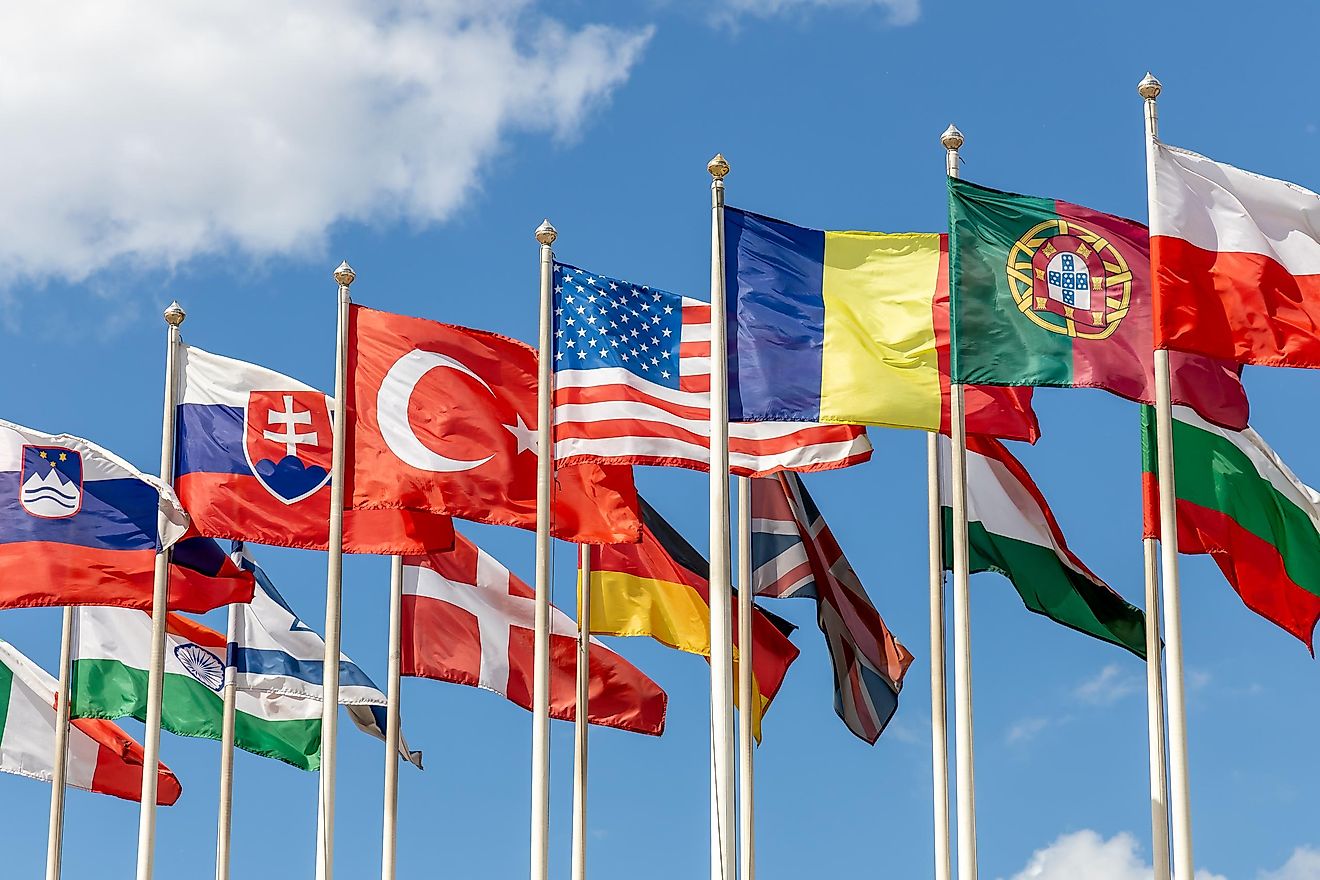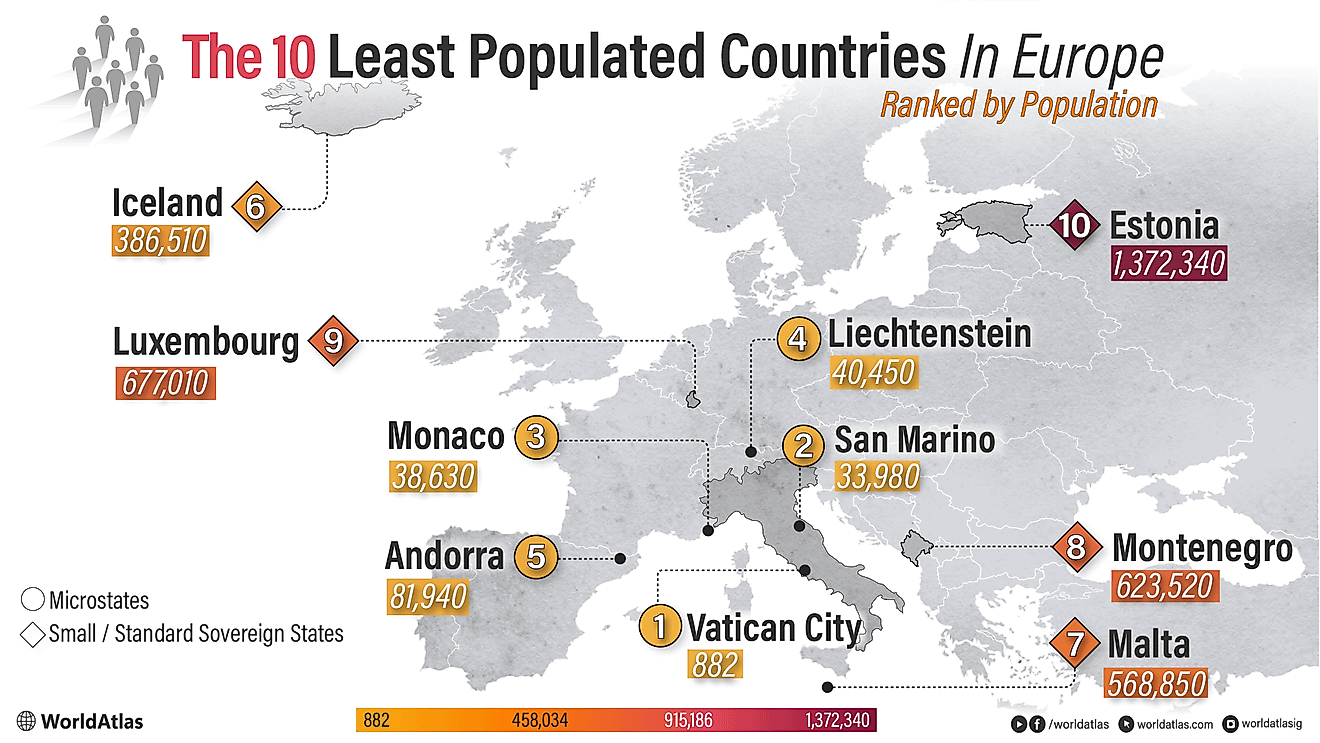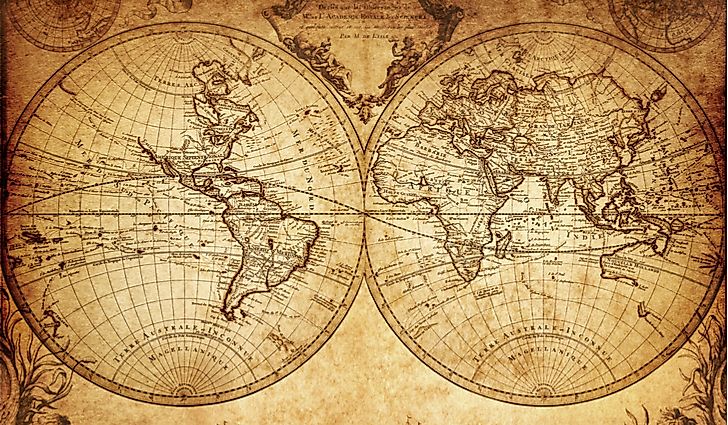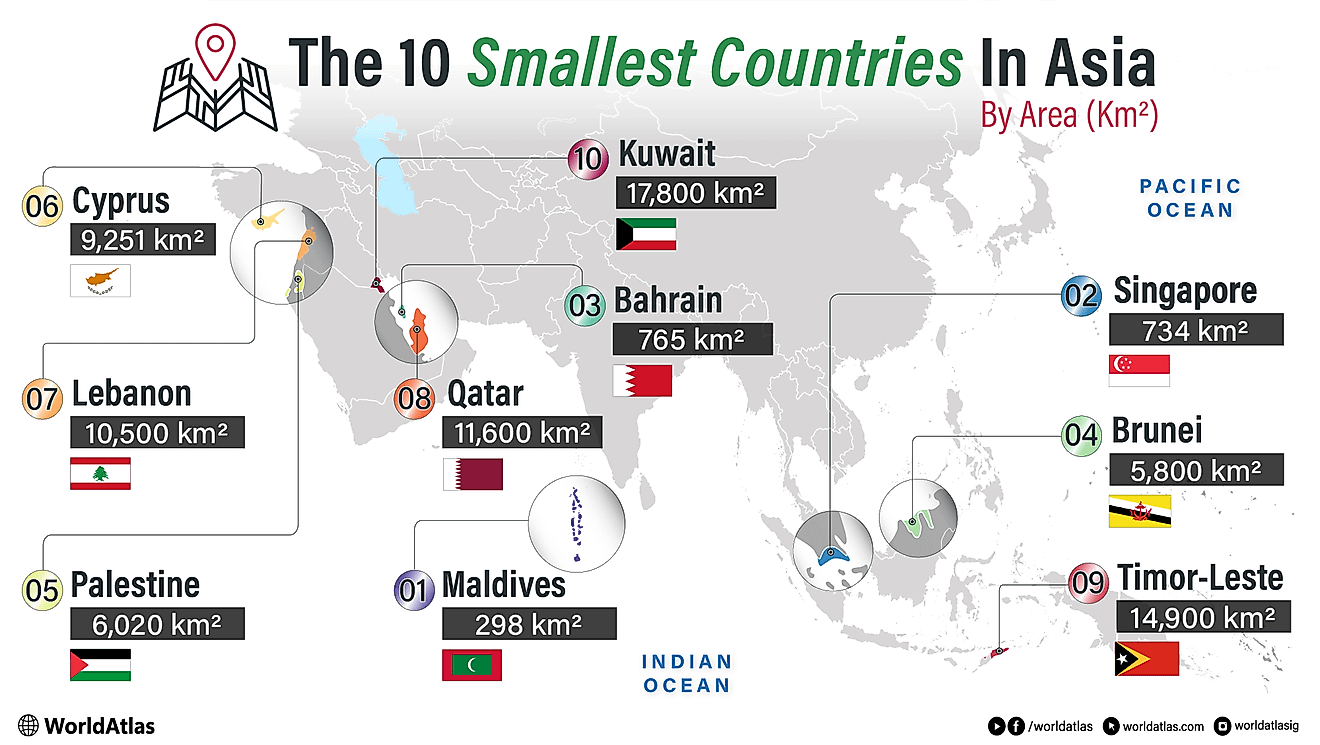New England (United States)
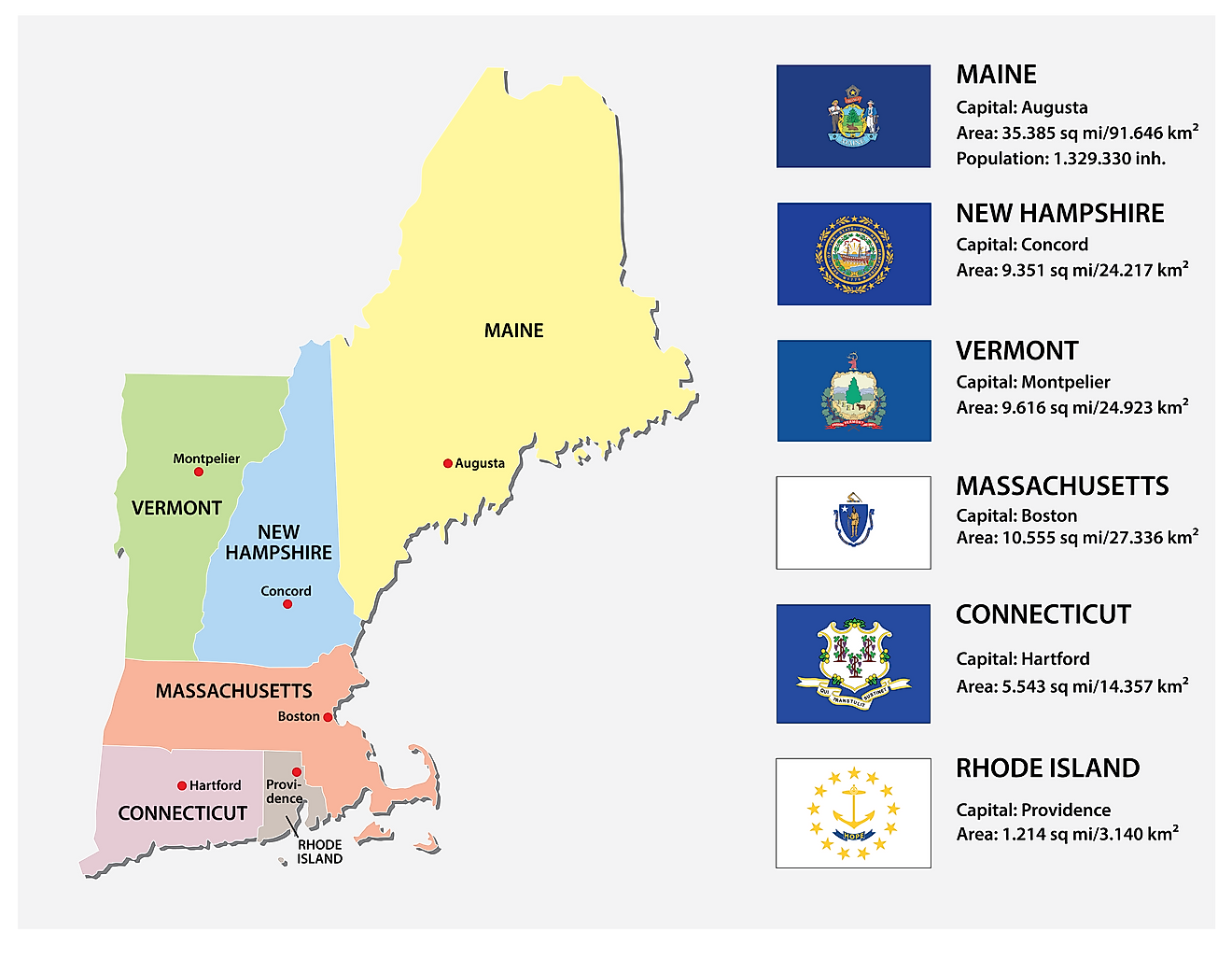
- New England is a region of the northeastern United States.
- New England consists of 6 U.S. states: Massachusetts, Rhode Island, Connecticut, Vermont, New Hampshire, and Maine
- The name, “New England”, was first given to the region by English ship Captain John Smith, after he explored the shores of the region.
- More than 15 million people call New England home today.
- New England was the region in which some of the first European colonies in the present-day U.S. were established.
New England is a region of the northeastern United States. It is bordered to the north and northeast by Canada, to the west by the Mid-Atlantic States, and to the east and south by the Atlantic Ocean. New England is composed of 6 U.S. states: Massachusetts, Rhode Island, Connecticut, Vermont, New Hampshire, and Maine. Four of these states were among the original 13 colonies that won independence from Great Britain following the American Revolutionary War. In fact, some of the first European colonies established in what became the U.S. were established in New England. Thus, the region figures prominently in American history.
Brief History
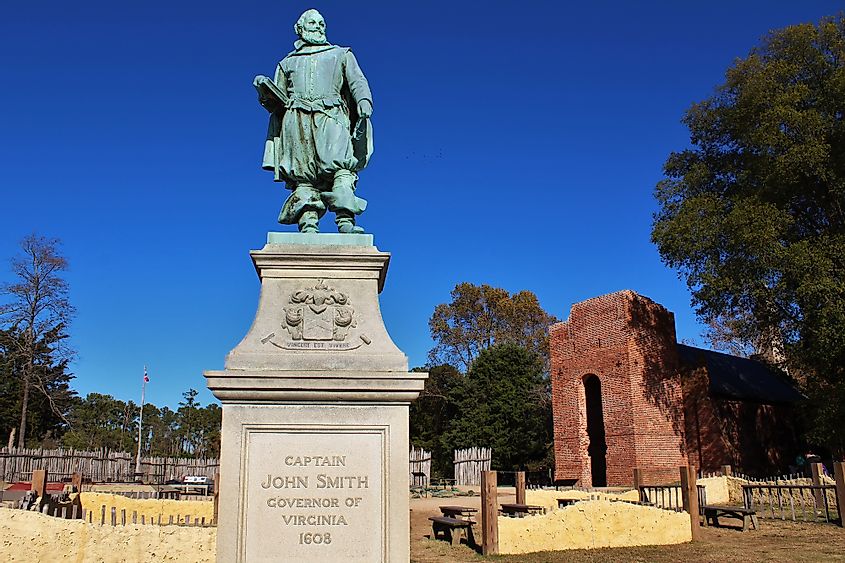
The name, “New England”, was first given to the region of the present-day northeastern United States by English ship Captain John Smith, who explored the shores of the region in 1614. The first Europeans to settle in New England were two groups of people known as Pilgrims and Puritans. The Pilgrims, called Separatists in England, were people who were estranged from the Church of England. The Puritans were called such because they wanted to “purify” the Anglican Church from what they believed was heresy. Both groups believed that neither the Anglican Church nor the Catholic Church were fulfilling God’s will. Therefore, they sought out to create a new society that would be based on their interpretation of God’s interests.
The first group of New England colonists set sail on a ship called the Mayflower in September of 1620. After a journey of about two months, the colonists landed in what became known as Cape Cod, in present-day Massachusetts. Upon making landfall, the colonists had to decide how they would govern themselves. To this end, they drew up what became known as the Mayflower Compact, in which they vowed to govern themselves by majority rule. This document is considered one of the most significant building blocks of American democracy, as the precedent for majority rule that it set would lead to the creation of democratic institutions, such as town halls and elected legislatures.
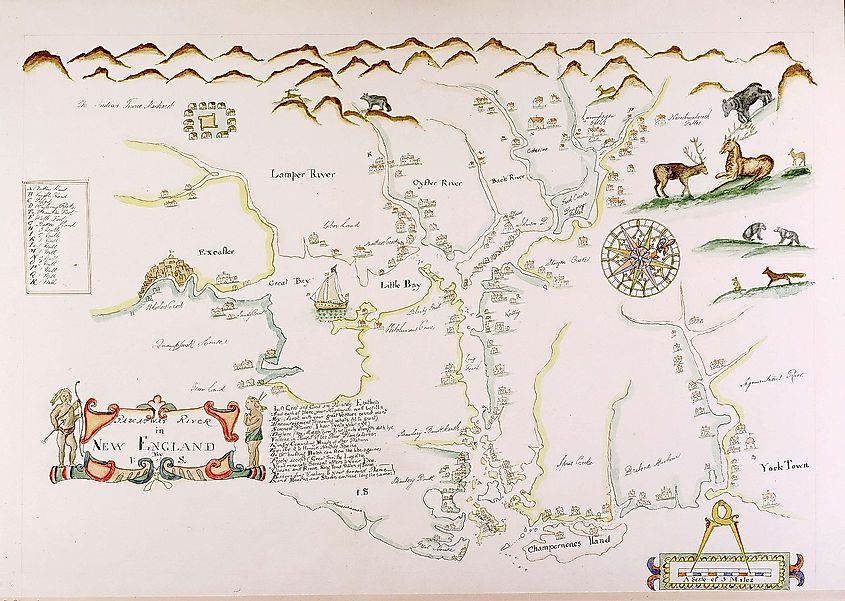
English settlement expanded in what became Massachusetts and beyond over the remainder of the 17th century. Thousands more Puritans left England to settle in the Massachusetts Bay area. They created other colonies, including Rhode Island, Connecticut, and New Haven. In 1643, the colonies of New England formed a loose alliance to counter perceived threats posed by Native Americans and other European colonial powers, such as the Dutch and French. The alliance was known as the United Colonies of New England. Over the next century, the New England colonies would be involved in several wars involving Native Americans and the French colony of New France, which were collectively known as the French and Indian Wars. This period of war culminated with the fall of New France in 1763, which allowed British settlement to expand into what became western New Hampshire and Vermont, by way of the Connecticut River Valley.
During the Revolutionary War, several New Englanders, including John Hancock, John Adams, and Samuel Adams assisted in the creation of the United States of America. Shortly after U.S. independence became a reality, there was some talk of separatism in New England among merchants who relied on their former mother country, Great Britain, as their most valued trading partner. Thus, they opposed going to war with the British as the Americans did in the War of 1812. This was the first stirring of separatism in the U.S. until the Civil War in the mid-19th century.
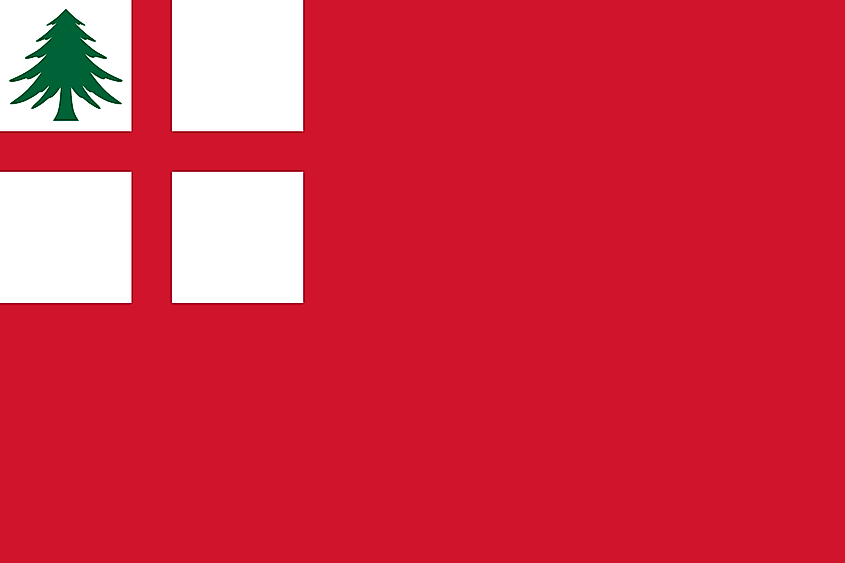
During what is known as the Antebellum Period, the period of American history between the War of 1812 and the Civil War, New England was a distinct region in the country. The region was generally not in agreement with the rest of the country politically. Indeed, it was long a bastion of the Abolitionist Movement, which sought to abolish slavery in the young country. In addition, New England was the most urbanized and the most educated region in the country. It was also an early center of the Industrial Revolution, which paved the way for the emergence of the factory-led economy.
By the 1930s, with the onset of the Great Depression, however, New England’s factory economy began to decline. This trend continued until the 1960s. Thus, much of New England began to resemble the Rust Belt that stretches from New York through the mid-West today. Eventually, however, a new economy based on high-tech industries and service industries would emerge in the region.
Though immigration and economic developments have changed New England over time, the region still possesses a distinct character, which includes its historic places and the prevalence of English town and county names. The region maintains its reputation for being well-educated, as it is home to half of the Ivy League schools in the U.S., as well as the world-renowned Massachusetts Institute of Technology (MIT). Coastal New Englanders even have a distinct dialect that is said to be similar to the dialect of people in southeastern England.
Geography
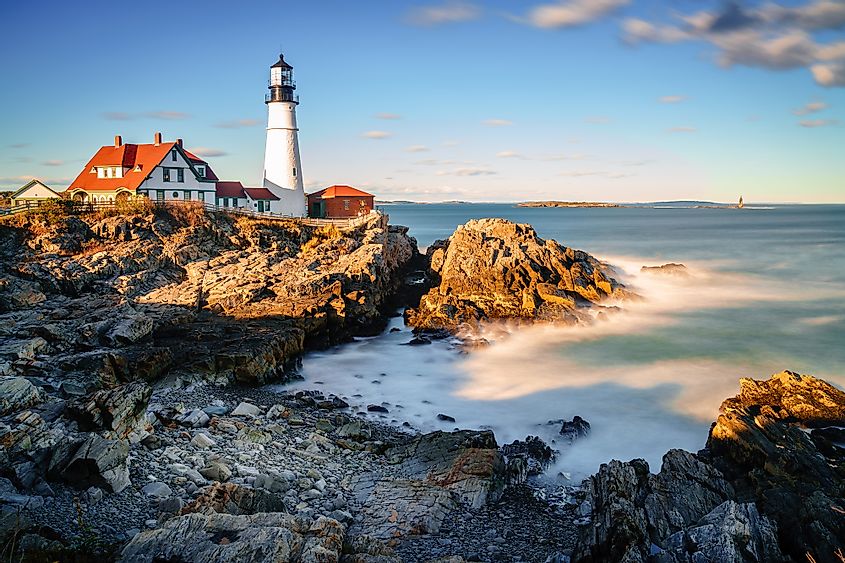
The total land area of New England is 71,991.8 sq. miles (186,458 sq. km). Nearly half of the region’s land area consists solely of the state of Maine. Rhode Island is the smallest state, not only in New England, but in the entire country. The other New England states are also among the country’s smallest. For a small region, New England is quite geographically diverse. The region has a jagged, rocky coastline, which formed suitable harbors for use by the first European colonists. The land adjacent to the coastline is largely composed of flat coastal plains, which made it ideal for the colonists to build settlements on. Lakes, hills, swamps, and sandy beaches can also be found on the coastline of New England.
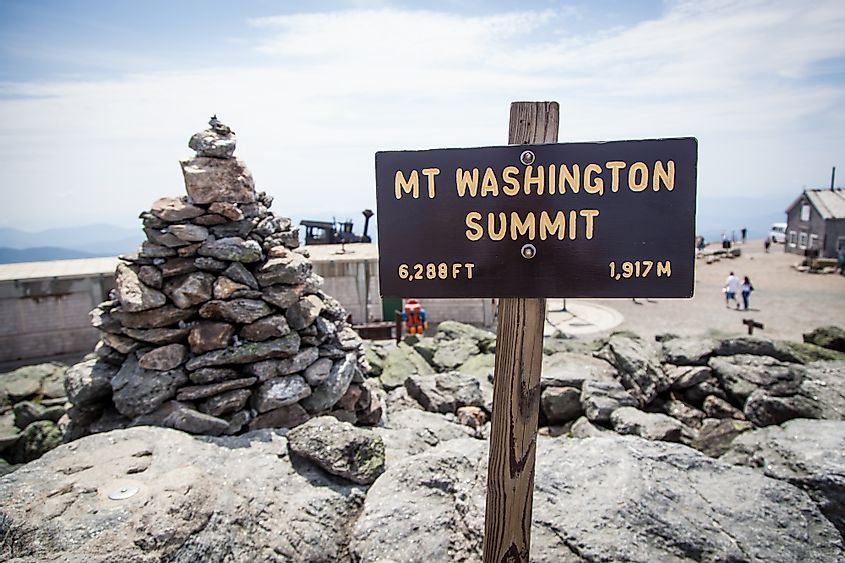
Further inland are the Appalachian Mountains, which extend through Connecticut, Massachusetts, Vermont, New Hampshire, and Maine. Among these mountains are New Hampshire’s White Mountains, and within the White Mountains is Mt. Washington, the tallest peak in the northeastern U.S., measuring at a height of 6,288 feet (1,917 meters). The longest river in New England is the Connecticut River, which flows from northeastern New Hampshire for 407 miles (655 km) before emptying into Long Island Sound. The largest lake in the region is Lake Champlain, which is on the border between Vermont and the Mid-Atlantic state of New York.
Demographics
As of 2020, New England had a total population of 15,116,205. Massachusetts is the most populous of the New England states, with a population of about 6.9 million, while Vermont, with a population of less than 629,000 is the least populous. In fact, Vermont is the 2nd least populous state in the entire U.S. Only Wyoming has a smaller population. New England’s largest city is Boston, the capital of Massachusetts. It has a population of approximately 695,000. Other major cities in New England include Worcester, Massachusetts, Providence, Rhode Island, and Springfield, Massachusetts.
The 10 Most Populated Cities In New England
City, State: Population
- Boston, Massachusetts: 655,884
- Worcester, Massachusetts: 183,016
- Providence, Rhode Island: 179,154
- Springfield, Massachusetts: 153,991
- Bridgeport, Connecticut: 147,612
- New Haven, Connecticut: 130,282
- Stamford, Connecticut: 128,278
- Hartford, Connecticut: 124,705
- Manchester, New Hampshire: 110,448
- Lowell, Massachusetts: 109,945
In terms of ethnicity, people of European descent make up more than 83.4% of New England’s population. Of these, about a fifth are of Irish descent. Those of Italian descent are the next largest group, at 13.6% of the region’s population. There is also a large community of people of French descent, who make up 13.1% of New England’s population. Other major groups include English, German, Polish, Portuguese, Scottish, Russian, and Greek. The non-European population consists mostly of people of Hispanic and Latino descent. They make up 10.2% of the region’s population. Inasmuch as New England is multicultural, however, it is not very multilingual, as 81.3% of the region’s population speaks only English.
New England (United States)
| Rank | State | Area (in km2) | Population | Capital |
|---|---|---|---|---|
| 1 | Connecticut | 14,357 | 3,563,077 | Hartford |
| 2 | Maine | 91,633 | 1,345,790 | Augusta |
| 3 | Massachusetts | 27,337 | 6,976,597 | Boston |
| 4 | New Hampshire | 24,214 | 1,371,246 | Concord |
| 5 | Vermont | 24,923 | 628,061 | Montpelier |
| 6 | Rhode Island | 3,144 | 1,056,161 | Providence |
